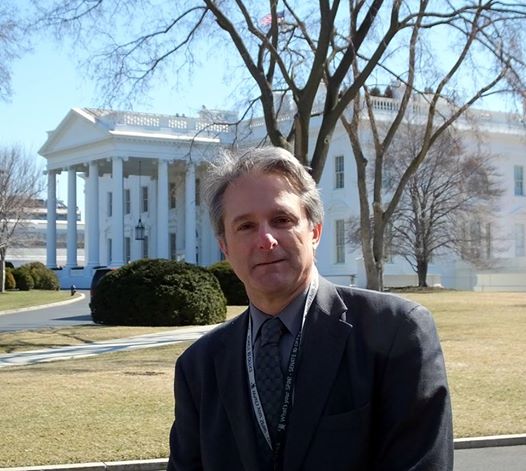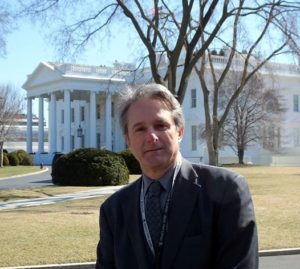Need for Better Monitoring and Review of Reporting, Social Media
Originally posted on July 18, 2020 and last edited for formatting changes on February 18, 2021.
by Dan Robinson
Sources have pointed BBG/USAGM Watch to numerous other areas of concern. But there is one recurring headline: a need for competent, regular assessment of social media and main reporting content that has in the past embarrassed the agency and VOA.
In 2014, one suggestion published by BBG/USAGM Watch, among a long list of recommendations compiled from employee suggestions aimed at improving the atmosphere at VOA proposed that management:
“Establish a journalistic ombudsman position at VOA, similar to major newspapers, to specifically focus on journalistic and coverage issues.”
Of course, anyone in such a position – this would be separate from an existing labor-related ombudsman that has existed for years – would come under enormous pressure considering the issues raised in this article, and by previous reporting by BBG/USAGM Watch.
Picture, for example, a management initiative to hold group sessions to thoroughly air concerns about balance and bias issues. Who would be willing to speak up and possibly reveal where they sit on the political spectrum?
One option would be to pattern this on information gathering methods used at the agency in past years in which the Office of Inspector General held one-on-one sessions with employees to attempt to zero in on problems and come up with options to fix them.
Since such a journalistic ombudsman would basically be arbitrating on sensitive and often emotional questions involving VOA reportage, careful consideration would have to be given to the parameters of the role and would be carry it out.
Managers Out of Touch re Charter Violations, Bias Problems
As Pack began to take control of USAGM, managers such as news center chief Lopez and ex-director Bennett sent notes applauding staff for upholding the VOA Charter and journalistic standards.
Kelu Chao, a decades-long fixture in VOA management sent a note praising “a dynamic, skilled team bringing factual news and information to places that need it, just as our Charter mandates.”
Ex-VOA director Bennett almost immediately upon arriving at VOA was praising “a fantastic leadership team.” But not everyone, to put it mildly, shares the view that VOA is doing a fine job upholding its Charter.
Reacting to a note the VOA news director sent, a source said:
“It’s one thing to showcase a list of articles to prove how good VOA was under Bennett’s leadership, but quite another to actually deal with problems of insufficient context in VOA reports and pieces containing fairly obvious anti-Trump bias.”
It’s clear that there are those at VOA and elsewhere in the agency who see these cheer-leading notes sent by VOA managers as empty words against a background of insufficient accountability for persistent violations of the VOA Charter.
Though actual online traction for VOA digital products and the validity of agency audience claims remain debatable issues, there is substantial concern that when anti-Trump stories get thousands of page views, VOA may actually be misleading not only its international audience but also its U.S. audience.
Back to Steve Springer and the ongoing “Balanced and Bias-Free Reporting” training sessions.
It’s not known whether any final report was ever prepared and submitted to ex-VOA director Bennett on findings from these. Again, obtaining these kinds of internal documents, if they exist, would likely require filing of a FOIA request.
There were a number of changes to the VOA Best Practices Guide, particularly in response to articles published by BBG/USAGM Watch.
These included a 2015 report on advocacy journalism at VOA noting that one broadcaster had posted photos on Facebook endorsing a democracy group, and showing the employee wrapped in a foreign flag at a demonstration in front of the White House, posting photos with Vice President Biden and praising his character.
Sure enough, the Best Practices Guide came to include the following portion on advocacy journalism:
“VOA journalists and all those preparing broadcast, website and social media programming must avoid any action or statement that might give the appearance of partisanship. THERE IS NO PLACE AT VOA FOR ADVOCACY JOURNALISM – THE PRESENTATION OF NEWS FROM ONE PARTICULAR VIEWPOINT OR ONE SPECIFIC AGENDA. This includes the wearing of lapel pins, religious symbols, clothing designs or color schemes that appear to support one party or individual over another.”
One would think that by now most VOA staff would have taken this admonition to heart. However, based on examples we have seen, brought to our attention by sources or discovered by simply viewing VOA’s website, there is a lot more work ahead.
Indeed, despite the warning about not taking advocacy positions, one of VOA’s major on-air program hosts was seen to have tweeted out a response (“NO”) to Donald Trump’s frequent “treason” allegation against those he views as opposing or having opposed him.
Some VOA staff posting anti-Trump comments on Facebook pages (BBG/USAGM Watch observed this content intensifying almost immediately after Trump’s election) do not reveal workplace affiliation to VOA — in so doing, they’re able to shield themselves from potential responses by management. Others show or even emphasize their affiliation with VOA.
Again, one only has to go to VOA’s own standards and practices guide to know that this is a violation of the organization’s own guidelines:
“Remember that on social media and other public spaces, you are a journalist. It is critical that you are fair, impartial and objective at all times. If you take a controversial position or display personal bias, it will reflect poorly on you and on the Voice of America. It could lead our audience to believe that we are untrustworthy and that you are unable to fairly cover a controversial story. This not only includes individual remarks in social media, but also posting your political affiliation or causes in your social media profile. Privacy policies change and people can take screenshots. Assume nothing is private in social media, even if your account is visible only to your online circle of friends. Even retweeting or “liking” an opinion on one side of the issue or another could be seen as an endorsement from you or from VOA. If you want to put that comment in front of your followers, make sure it is clear you aren’t endorsing the opinion, but simply showing both sides of the conversation. . . ALLEGATIONS OF SOCIAL MEDIA MISUSE WILL BE FULLY INVESTIGATED, AND STAFFERS WILL BE NOTIFIED OF ANY SUCH ALLEGATIONS. SOCIAL MEDIA MISUSE MAY RESULT IN DISCIPLINARY ACTION, UP TO AND INCLUDING REMOVAL FROM FEDERAL SERVICE”
It’s not known whether any USAGM/VOA employee or any employee working for other agency media elements has ever been removed from federal service based on these newer guidelines — that would certainly be an interesting question to ask the agency.
To what extent headlines on many VOA stories, such as a recent one blaring “After Weeks of Protests, Trump Sticks to Stoking Division” are more the responsibility of the VOA newsroom than individual correspondents is an interesting side topic.
Day to day inside VOA it’s apparent there are those who have remained largely silent about content that often seems to be in line with Democratic Party talking points (see again the section in VOA’s Best Practices Guide on the importance of balance). In any organization, people speaking their minds can face retaliation.
Problems Demand Action Whether Trump Wins Or Not
Even amid recent polls showing Donald Trump falling farther behind Democrat Joe Biden in the November presidential election (based on the 2016 election results making any assumption about the final result is risky) there are abundant reasons to be concerned about bias at VOA.
It’s often helpful to enlist the views of former employees as part of an effort to obtain clarity. Recently, a former VOA central correspondent who retired some years ago offered the following observations:
“[Several decades ago] there was a lot more diversity of opinion. Editors would quickly catch anything that seemed to be taking a partisan line and would either strike it or demand a line or two of the other side for balance. In more recent years there were editors who made assignments based on their personal political leanings. . .
If [new USAGM CEO Michael Pack] tries to encourage more balance, liberal managers will accuse him of fostering bias. The only way he might be able to correct the situation would be to pull a bunch of managers and editors together to explain what is needed. He should maintain a dialogue so as to discourage people from leaking tidbits to the media or to select members of Congress. Not that they won’t do it anyway, but he would be in a stronger position by showing himself as at least open to dialogue and willing to discourage bias from left or right. Most employees see themselves as fair-minded professionals and they will back him if they believe he is facing unjustified attacks from misinformed outsiders.
There may be a way to make VOA more relevant in today’s world, but it will take a serious, non-partisan effort to find it. Despite the recent flash of media attention, VOA is not a gripping issue for any large segment of the electorate. To the extent that it is known, there are people on the left who deride it as an American propaganda machine and people on the right who see its only value as a device to condemn foreign leaders they don’t like and promote their ideology, in other words, to effectively do what those on the left already accuse it of doing. To keep out of the fray VOA should maintain its low profile and remain the obscure, but routinely funded agency it has become.”
It’s clear that the arrival of Michael Pack set in motion a number of events that caused intense concern among VOA employees. In one internal meeting discussing management changes, employees were reported to have referred to him and his team in sarcastic terms.
In this polarized (to use that over-used term again) society with a president who only recently referred to the rise of a “far-left fascism” — making a case that the 45th president has been subjected to unfair biased reporting is a challenge.
It will not be an easy task for new agency and VOA managers to confront the issues raised here. Prior to assuming his interim appointment from Mr. Pack as VOA Acting Associate Director, former VOA Albanian Service chief and Eurasia Division director Dr. Elez Biberaj was posting on social media personal letters he received from former President Obama and former Vice President Biden congratulating him and his family on their achievements as immigrants, but also photos with U.S. politicians and political activists, some during a U.S. election campaign, as well as photos with government leaders and politicians in Albania and Kosovo.
Confront these issues they must, because the problems go to the heart of whether VOA can be seen as an unbiased, non-partisan organization. This also applies to other media entities under USAGM.
Ultimately, that is an important question that American taxpayers should demand an answer to, even at the “bang-for-the-buck” annual price of between $600 million to $800 million.
READ PART ONE
READ PART TWO
READ PART THREE
READ PART FOUR
Dan Robinson retired in 2014 after 34 years with the Voice of America. In addition to his assignment as senior White House correspondent from 2010 to 2014, he served as bureau chief in Nairobi, Kenya and Bangkok, Thailand. He was also the chief of the VOA Burmese Service and the Capitol Hill correspondent. Views expressed here are his own.










